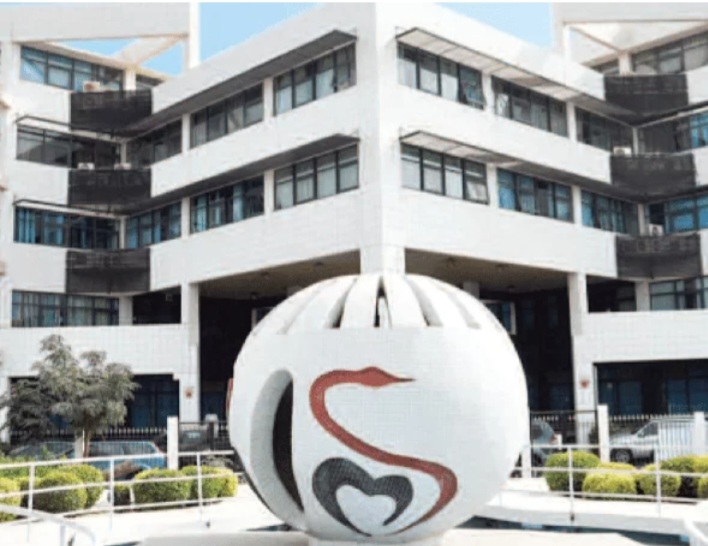Senegal is still struggling to have sufficient quality health infrastructures, appropriate equipment, and qualified human resources.
This post aims to provide an important analysis of the Senegalese health sector, by focusing on the relevant data for an appropriate understanding of the system.
Senegal Health System Pyramid
The implementation of Senegal’s health policy is guided by the National Health and Social Development Plan (PNDSS) from 2019 to 2028. This plan, drawn up after three strategic planning cycles, aims to improve people’s health and well-being by effectively providing quality basic and referral health and social services.
The Senegalese social and health sector is organized on a pyramidal basis in conformity with the country’s administrative structure. The system comprises:
- The central level, at the top of the pyramid, includes the Minister’s Office, the General Secretariat, the General Directorates, the National Directorates, and the National Social Reintegration Centers and is responsible for devising policy and strategic orientations and mobilization and allocation of resources.
- The intermediate level comprises the medical regions and the regional departments of social action, which execute, monitor, and coordinate the implementation of policies, strategies, and plans.
- The peripheral level forms the base of the pyramid structure and comprises the health districts, social action departments, and the Promotion and Social Reintegration Centers (CPRS). It is the operational level where activities must be integrated and synergized.
Insufficient Health Investments
The health services are provided by hospitals and non-hospital public health establishments, the health centers, the health posts, and community structures (health districts).
According to the latest figures from the ANSD SES 2019 report, published in 2022, there are 40 public health establishments in Senegal, including 36 hospitals and four non-hospitals.
Hospital facilities are organized into three levels located only in the regions of Dakar and Diourbel “Touba,” Senegal’s two largest cities.
Non-hospital facilities include the Emergency Medical Assistance Service (SAMU), the National Orthopedic Center (CNAO), the National Blood Transfusion Center (CNTS), and the National Supply Pharmacy (PNA), having ten decentralized departments known as Pharmacies Régionales d’Approvisionnement (PRA). In 2019, Senegal had 79 health districts, 103 health centers, and 1,415 health posts, polarizing 2,676 health houses.
Hygiene structures comprise 14 Regional Hygiene Brigades that follow the territorial contours of the regions, two Special Hygiene Brigades in Touba and Tivaouane, 61 Hygiene Sub-Brigades housed within the health districts, and 12 Hygiene Posts. However, 17 health districts have no hygiene sub-brigades.
In the social action field, there are four National Centers for Social Reinsertion (CNRS) located in Bambey, Darou Mousty, Kaolack, and Bignona, 14 Regional Social Action Services (SRAS), 45 Departmental Social Action Services (SDAS), 49 Promotion and Social Reinsertion Centers (CPRS). Local and community services are provided by front-line workers in CPRSs, Health Posts, and Health Centres.
With regard to the private provision of healthcare services, the private healthcare sector comprises 27,5410 private healthcare facilities (SPS)—1,225 healthcare SPSs, including three hospitals, 37 health centers, 359 doctors’ surgeries, 118 clinics, 443 paramedical surgeries, 132 company structures; 111 private health posts—33 diagnostic SPSs, including 26 biomedical analysis laboratories, seven radiology, and medical imaging centers.
The Inequitable Human Resource Deployment
The regional distribution of healthcare personnel reveals that Dakar, Senegal’s capital city, has more health professionals than in the other 13 regions. Overall, 46% of professionals are located in Dakar, followed by Thies (10%) and Saint-Louis (6%).
The Kédougou region has just 1%, making it the least well-endowed region in the country. However, these figures conceal disparities according to staff type.
Indeed, 29% of the country’s general health practitioners and 28% of its state midwives are based in Dakar, compared with 2.2% and 2.8% in Kédougou. Similarly, 70% of pediatricians are based in Dakar, while no pediatricians are in Kédougou. Dakar’s situation is the corollary of its demography, which alone accounts for 23% of the country’s total population, and its strategic position as a lucrative healthcare expenditure with the highest technical standards (6).
A Sector Grappling with Financial Nightmares Despite Getting 15% of the Approved Budget
Health financing comes mainly from the State, development partners, local households, and authorities. The population contributes directly to the financing of the health sector through the system of contributions to healthcare services while the State is the main provider of financial resources to the health sector. The share of the budget provided to the health sector has always been insufficient, yet we have noticed a progressive increase from 2020 with the COVID-19 pandemic. Today, this budget represents 15% of the State’s 2023 approved budget, but we cannot deny that the health sector still wrestles with many challenges.
